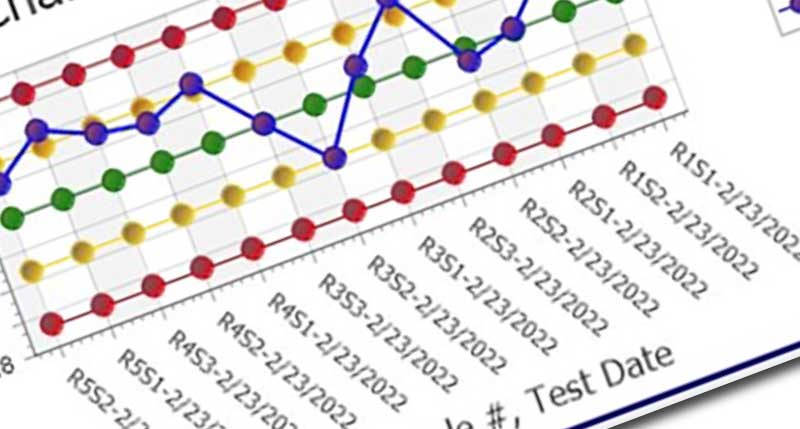Manufacturing operations can suffer from a variety of costs. Some are easy to spot like downtime or losses in throughput. Others slide under the radar rather easily. Scrap is one of those costs whose true value is hard to know if there isn’t a concerted effort to watch it.
The usual method for tracking scrap is recording amounts after shifts and reporting it up to supervisors to collate. In this process, there’s several ways the actual count of scrap produced can be improperly recorded. Counts could be estimated after the fact, shift counts could get intermingled or the humans recording the numbers could just be error-prone for a variety of reasons.
Accurate counts in real time
There’s another way to more effectively track scrap production – using a Manufacturing Execution System (MES) like MV2 to automatically record counts. This can be done in a few ways with the MES. One is to directly record the data from the machines themselves. Another is to provide the ability for operators and workers to record scrap parts as they’re found, rather than to keep a tally or to remember to count at the end of a shift. There are other methods, but these are the most common and easiest to integrate.
Uncover insights from historical analysis
While the manager certainly receives a far more accurate count of scrap materials and componentry, using an MES like MV2 to track these events and parts, the manager is also provided the opportunity to see scrap production in a whole new light. No longer is scrap just a summed value for a period of time. Now, production can be looked at over time to uncover trends and insights that can be instrumental in meaningful scrap reduction efforts.

Historical scrap production data can show that certain shifts, machines or operators are more susceptible to creating scrap than others. The data could indicate certain material batches are prone to poor quality. It could even lead to uncovering product design faults that encourage more failed parts than is allowable. The manufacturing engineer or plant manager would have the information necessary to indicate which machines may need services, operators who need more training, vendors who need to increase their quality or the places where a product needs to be rethought.
React to quality issues faster
Of course, knowing when things start going bad on the floor in real time has its benefits as well. This is especially true in high cost, high complexity manufacturing processes where one operation can submarine a sizable amount of upstream investment. MV2 can be set up to send alerts in real time when critical events run astray of control. The manager won’t have to wait until the end of a shift to learn about expensive parts being turned into scrap. They can immediately stop and assess processes before costs and timetables get out of hand.
In short, a manufacturing execution system like MV2 turns scrap from a nebulous cost of doing business to potential for managers to make a quantifiable impact on the company’s profitability.
Learn more
If you’re looking to get a better handle on your operation’s scrap and production failure rates, contact us today. Our highly trained consultants can help determine what impact MV2 MES could have on your facility.

